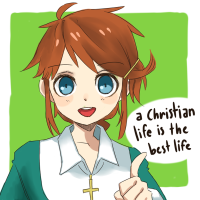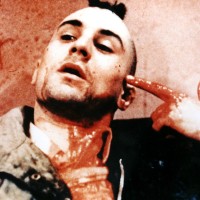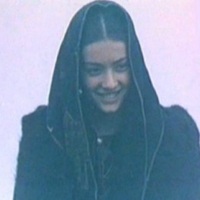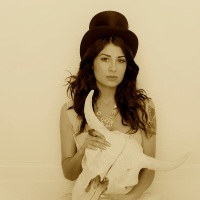The Švankmajer Effect #1
Part One
Explorations in Texture

The Inexplicable Automaton Monkey’s that Open Jan Svankmajer’s Rakvičkárna – Also known as The Coffin Factory or Punch and Judy
In 1989 I first came across the puppet films of Jan Švankmajer at the Film Forum in New York City. I remember feeling an oddness popping through the screen. I couldn’t put my finger on it. A little later I also discovered the films of the Brothers Quay, which also touched a similar, if indefinable, nerve. (Someday I’ll discuss the Quays in more depth.) I wasn’t consciously interested in puppetry then. My interest was primarily in film. But over the years I kept returning to the works of Švankmajer. I eagerly bought my tickets at obscure venues to watch Švankmajer’s Alice and Faust as they were released. These works were bellwethers for me.
Švankmajer’s films, with their manic crosscutting and hyperreal sound effects, reflected the preoccupation of the filmmaker with his pet obsessions; childhood nightmares, food, the difficulties of dialogue and, certainly, puppets. As an American I saw puppets mainly as a folk art relegated to the nursery where fluffy Muppets amuse toddlers. Švankmajer’s use of puppetry was a revelation. Yet throughout the early 90’s only slowly, dimly, did it occur to me to seek out puppetry in New York. A little diligence would have amply rewarded. Yet in a way I’m glad that it was only in my last year in the city, before moving to Alaska, that I began to realize that much of the strength of the Švankmajer and the Brothers Quay lay in their puppets. In 1994 I discovered their VHS tapes at Kim’s Video. Only as I began to closely examine these films that I began to understand what I was seeing.
But even before I lay hold of the videos I knew what it was that really grabbed me in Švankmajer’s works. In a word it was texture. By the late eighties I was already convinced that something was off in the modern preoccupation with flat empty surfaces. Whether it was the white walls of galleries, offices and apartments, or whether it was the flatness of of our appliances, fixtures and electronic gadgetry, it occurred to me that humanity was not meant to live in sterile empty environments. Nature was a system at once soothingly simple and extremely complex. Their was the visual sweep of the forest and the unique singularity of the bark on one tree. Traditional art and design had many of these elements as well. But Modernist aesthetics, say Bauhaus or minimalism, had been commercialized and sold to people in a variety of packages. Take a walk through the average postwar office building; look for the cheese in the sterile rat trap. What would be the effect upon humanity living in an environment as dead as the surface of the average refrigerator? While it would be almost scientifically impossible to calculate I think we already know the answer.
Švankmajer’s puppet films fly in the face of the sleek modernist ethic by pushing your face directly into the path of dense textures. There are few simple textures in a Švankmajer film. Instead you get a riot of corrosion, fracturing, old wood grain, rotting food, vegetation, dank metal and dry bone. He even animates cow tongues and pieces of raw pork.
In Rakvičkárna (known in English as Punch and Judy or it’s more literal translation The Coffin Factory) textures and puppetry go hand in hand. From it’s opening shots of decaying musical automaton monkeys it pushes texture to the foreground. The textures that then assault us include mechanical toys and carousel horses, a dead animal eye suddenly slipped in among the painted. Then we are forced to observe the ripped patchwork of gunny sack burlap that makes up one of the backdrops. And then come the two puppets, each a masterpiece of textural complexity. While called Punch and Judy, there is no Judy figure represented. Instead we have Punch and what seems to be Harlequin (which touches of Pierrot). Punch is fashioned in an antique manner a la the 17th Century. But this is not an antique puppet, it is purposely aged. The face of this punch is like a painted moonscape, designed to appeared cracked and dented. Likewise the Harlequin wears an extraordinarily colorful ragged patchwork gown. Then to really up the textural ante, as if it wasn’t already thick with cracks, crevices and features, Švankmajer throws in a live guinea pig then proceeds to show us its fur, eyes, teeth, and moving tongue. All of this is still only the opening salvo. There is a strange house wallpapered with antiquarian clippings from books and newspapers. There is a coffin papered in a puppet sized engraving of a skeleton. The coffin is then hammered, nailed and dripped upon by candles. Finally in a frenetic battle holes are drilled in the wooden floor and carnivalesque paintings are punctured as we are reminded that at the beginning these puppets were merely the extension of fleshy human hands.
Similar textural studies can be found in Don Šajn (or Don Juan) where the Švankmajer thrusts us into further conundrums: Are the puppets old or merely painted that way? Are the puppets real or are they actors in puppet garb? Is that a set or is it a very non-theatrical reality? Švankmajer distinctively blurs such distinctions. At one point two human-sized puppets are sword fighting in a decayed medieval setting, which is overgrown with weeds and shrubbery, when they pass a wing of the Baroque stage they have also been seen on. And it isn’t the front of the stage. We instead get a casual sidelong glances at the back of the painted set. No attention is paid to this detail. This breakdown between the theatrical or the filmic illusion and the grittier denser textures of reality are a hallmark of Švankmajer’s work. It doesn’t matter if you see the hands or the back of the set. He does this without breaking the illusion of the piece at all. What matters is to bring the animated figure or the object freely back and forth across the borders of our reality, much as messages, books, music, etc had to be smuggled in and out of the old Communist world. And texture is one of his chief means for accomplishing this feat.
And so Švankmajer uses real bones in Neco z Alenky (or Alice), his version of Alice in Wonderland, and stuffed rabbits, various socks, actual false teeth, glass eyes and many other objects not generally associated with puppetry or animation. In Moznosti dialogu (Dimensions in Dialogue) he uses most of the objects found on a desk, in a kitchen, in a refrigerator, not to mention shoes, butter and toothpaste. And not content to merely use these things he crushes or destroys each in its turn changing the textures from the rather hollow items purchased in stores into symbolically charged objects.
People sometimes use the phrase object theatre. And just as often they mean something which is taken from the outside world and treated theatrically. The object in Švankmajer’s hands retains the mystery of the thing in itself. He points us away from the slick surfaces of modernity towards the haunted characteristics of older inhabited used materials. In doing so Švankmajer displays an aspect of his professed Surrealism. And old school Surrealists valued the displaced object highly.
(To be concluded next time.)
Byrne Power
Haines, Alaska
7/1/12
For more Anadromous puppetry essays:
https://theanadromist.wordpress.com/2011/03/02/antidote-art-1/
https://theanadromist.wordpress.com/2011/03/10/antidote-art-2/
https://theanadromist.wordpress.com/2011/11/27/journey-into-european-puppetry-1/














Great article! Never pinpointed that texture aspect before
January 13, 2013 at 2:24 AM